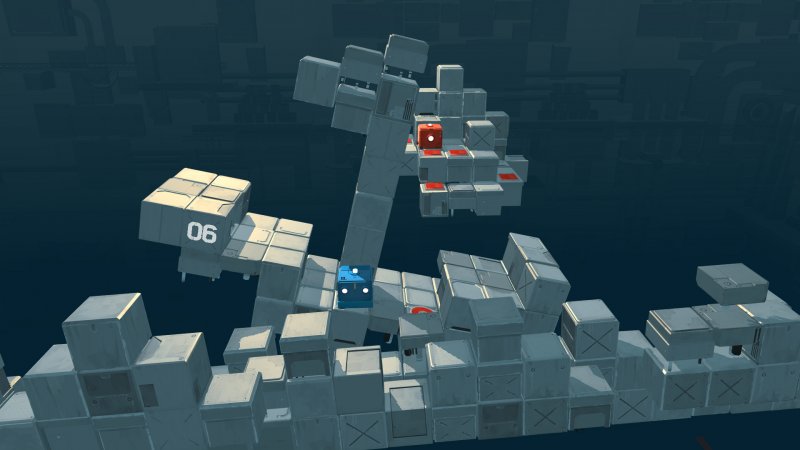A sort of strand has begun that has played on the cynicism and the absurdity of certain experiments that are an end in themselves to put together a vision that is both funny and terrible in technology and scientific research.
Death Squared is part of this imagery made of cruel trials and brutal departures, all in honor of unidentified tests carried out by an employee called David hired by the mysterious company Omni-corp. Pressed by his working computer Iris, equipped with a pungent artificial intelligence,
David has to complete 80 tests focused on intelligence solving environmental puzzles involving the simultaneous use of two work robots in strange and intricate environments.
The structure of the game follows a rather schematic approach, but the apparent coldness of the graphic style adopted and the subject matter is tempered by the background humor, constantly supported by the ironic dialogues between David and Iris,
which in addition to providing vague indications on the underlying narrative substratum sarcastically comment on the successes and (numerous) failures that are staged on the screen, while trying to understand precisely how to maneuver the two cubic robots avoiding to end them in the most atrocious ways .
As is evident already from the title, “death” is an element always present in the course of the game, although it is actually the destruction of the two automata: not only
the slightest error is punished severely, but also the search for the solution necessarily passes through a first trial period that inevitably brings the two poor robots to crash, explode or destroy in various ways. In short, frustration seems to be an integral part of the gameplay in Death Squared.
CONCERTED ACTION
It is therefore a matter of guiding these two robots (or more, in the case of multiplayer to more than two players) of cubic form within labyrinthine levels composed of blocks suspended in the void, trying to reach their point of arrival. Playing alone, the control system closely resembles that seen in Brothers: A Tale of Two Sons, with the two sticks that control the two robots independently.
The puzzles are structured in such a way as to require a coordinated action between the two, which are therefore having to move simultaneously or shift according to specific patterns, so as not to run into the traps disseminated for the levels.
The alternation in the use of the two is fundamental and is played on the chromatic elements: for example, the red turrets can only damage the blue robot and vice versa, just as the blue transparent cubes can only be trampled by the red robot and vice versa. pressure of some boxes can trigger opposing traps or transport mechanisms, all situations in which it is necessary to understand the order in which to move the two characters and the precise maneuvers to be carried out.
All this leads to plan a careful mixed and perfectly coordinated use of the two robots in order to reach the conclusion of the levels, even if in some cases the solution can arrive somewhat haphazardly and in others you have the distinct impression of being able to force a not exactly orthodox solution to reach the conclusion. In some ways, the structure also recalls the excellent SnipperClips,
especially when playing in multiplayer cooperative two-player, since in single, unlike the title SFB Games, here you find yourself having to move the two protagonists even simultaneously, performing different movements with the two analog sticks.
The similarity appears obvious in the case of multiplayer two or more players, where the fun increases with the need to agree shouting instructions to each other and laughing for every unworthy end of the poor robots, thus tempering the sense of frustration that in single tends often to emerge, perhaps after numerous failed attempts.

